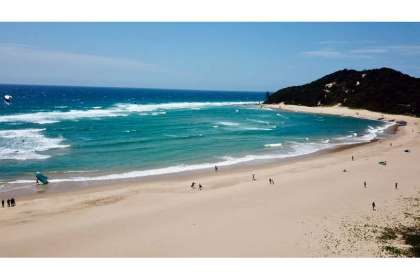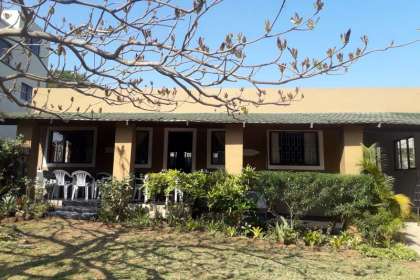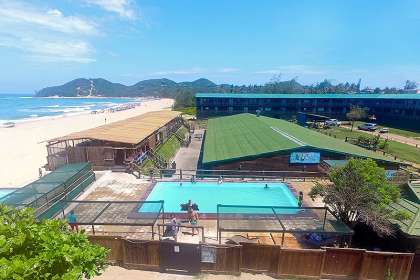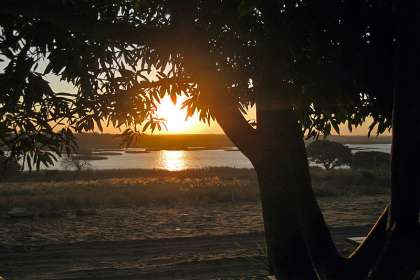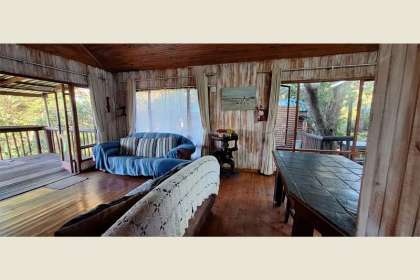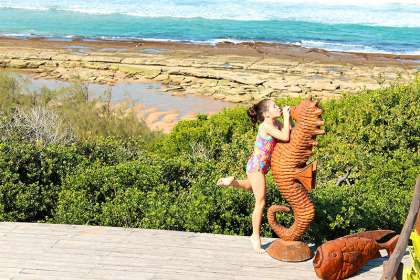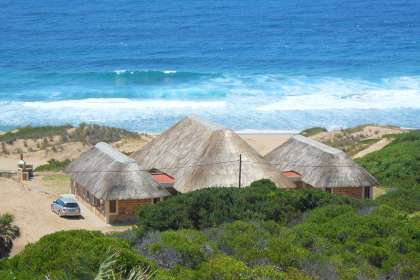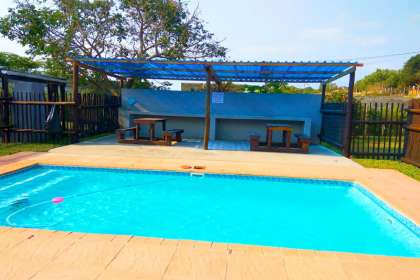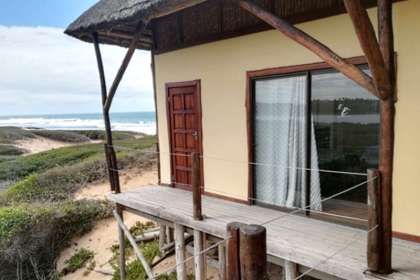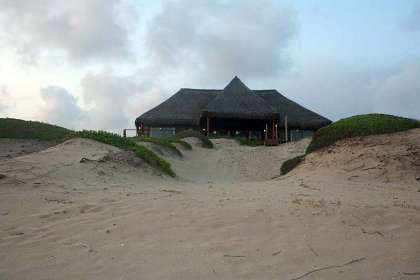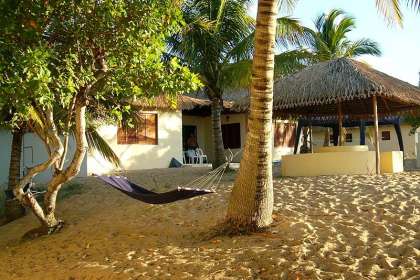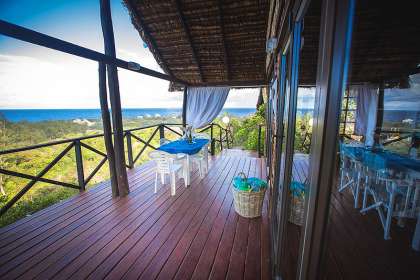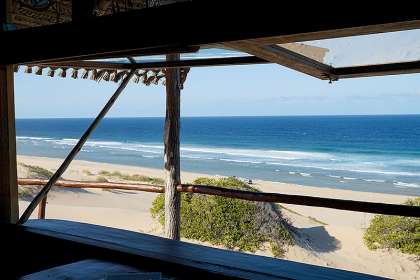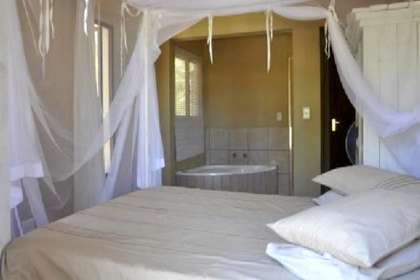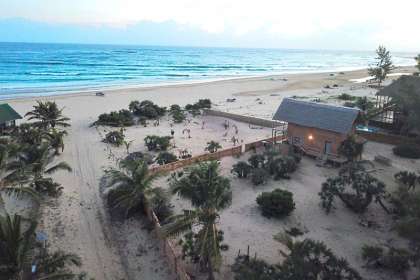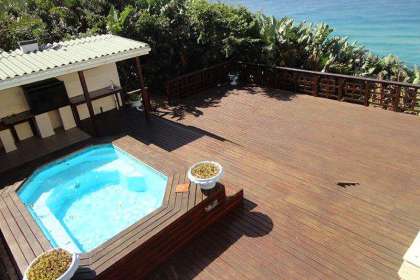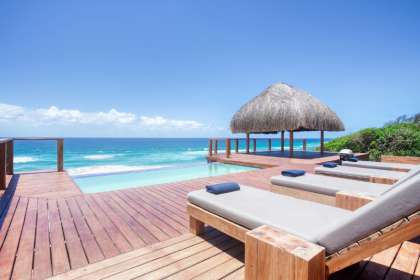Mozambiek
Mozambiek
Mozambique is a country of nearly 20 million inhabitants and is situated on the eastern coast of Africa directly opposite the Indian Ocean island state of Madagascar. Mozambique is bordered by Tanzania in the north, and going anticlockwise by Malawi, Zambia, Zimbabwe, South Africa and Swaziland. The country has an extremely long coastline of warm tropical water, and with a reef stretching along the entire coast is a mecca for scuba divers.
Two important rivers flow through Mozambique, the Limpopo and the Zambesi, upon which is the vast Caborra Bassa dam and hydroelectric scheme. In the north of the country there are several hundred miles of coast on Lake Malawi. There are mountains rising to 8000-feet in the west and north of the country. Most of the country is comprised of a wide coastal plain.
Mozambique was for a long time a colony of Portugal, whose explorers first visited the country in 1498 AD. At that time there were a few Arabic trading settlements dotted along the coast, and from 1500 AD Portugal had established a chain of trading posts and forts, calling points for its ships sailing to the East. Mozambique was granted its independence in 1975 following a military coup in Portugal that overturned its government. A brutal civil war followed Independence, and it was not until 1992 that a democratic government was in place for the first time. By 1995 the 1.7 million Mozambicans who had sought refuge from the civil war in neighbouring countries had mostly returned to their places of origin.
Apart from the year 2000 when there were devastating floods, economic growth has been sustained at high levels since democracy, though nearly 90% of the country's arable land is still uncultivated. Most of the populations are subsistence farmers, and there is still much work to be done to build up commercial networks and infrastructure. Many smaller state-owned businesses have been privatized, but there is still much to be done to improve the trade balance. Mozambique is divided into ten provinces and the capital, Maputo, which has provincial status.
Mozambique has risen from a bankrupt country in the late 1970s to become one of Africa's new successes. The country produces ample food for itself, and has plenty left over for exports. The main exports are coal and energy (electric power is exported to South Africa), agricultural products, aluminium, asbestos, textiles, cement, glass and tobacco. Since 1994 there has been major investment in the country by South Africa. The main imports are mining equipment, pharmaceuticals, raw materials, spare parts, chemical products, consumer goods and crude oil.
It is essential to be aware of the several potential health hazards of Mozambique and to take precautions where necessary. Malaria is widespread, but don't rely on Chloroquine or Paludrine as these drugs are now ineffective against resistant strains of the disease. See your doctor before you travel. Avoid tap water if you can - bottled water is cheap and plentiful in the cities and resorts. If you're going to places where bottled water is scarce, take a good water purification kit. HIV is common here, so avoid unprotected sex. If you are concerned about the hygiene of a restaurant, avoid it. Be sure to get all of your vaccine shots before you travel to Mozambique.
Apart from the highway to Johannesburg, which is good, and the road to Swaziland, which is in reasonable condition, other internal roads of Mozambique are in poor condition and travel by 4 x 4 is recommended. There are railway links with Johannesburg, Malawi and Zimbabwe, and several airlines serve Mozambique from neighbouring countries as well as to and from Kenya and Portugal.
Maputo Province
The Inhambane, Gaza and Maputo Region, comprising three provinces, occupies the southern portion of Mozambique roughly from the Save River southwards. Because of its closeness to South Africa, this region of Mozambique has been the first to be redeveloped for tourism, and resort hotels are comfortable and inexpensive.
At the southern end of this region lies the capital of Mozambique, Maputo, which has provincial status. This province lies adjacent to South Africa and Swaziland, and while the main highway to the former has been kept in good condition, the visitor can expect a second rate road surface to the latter. Maputo Province, overlooking Delagoa Bay, offers a variety of good hotels in the city, and offers a view of some of the Old Portuguese colonial architecture.
Bordering Maputo Prince to the north is Gaza Province, which is known as the granary of Mozambique. The fertile valleys of the Limpopo and its tributary, the Changane, were among the first to be resettled in the 1990s after peace returned to Mozambique following its civil war. There is widespread grain farming in the region. The capital of Gaza Province is Xai Xai, some two hundred kilometers from Maputo. Xai Xai is a popular destination harbouring several good hotels and restaurants, though many visitors prefer the nearby beach resort of Praia do Xai Xai.
Much of the coast of East Africa has a coral reef that runs parallel to the beach. The beaches are pristine white made up of tiny particles of coral that have been weathered by the Indian Ocean rollers. The waters inside the reef are normally shallow and clear and offer some fine snorkeling. Tourists can often purchase shellfish gathered by the locals from the reef at low tide. Inland from Xai Xai is the Banhine National Park, which is bordered north and south by the Changane and Limpopo rivers respectively. Moves are under way to link up this reserve to South Africa?s Kruger National Park and Zimbabwe?s Gonarezhou National Park. This protected area is rich with wild life.
A little further north, and bordered on its northern side by the Save River, is Inhambane Province. Inhambane harbours what is arguably the most popular of Mozambique destinations, the Bazaruto Archipelago. The archipelago comprises four islands, Bazaruto, Magaruque, Benguera, and Santa Carolina, and each island has excellent hotels. Like Gaza Province to the south, Inhambane sports pristine white coral sands and an extensive barrier reef. The beaches are lined with coconut palms and Cashew trees, both of which are harvested by the locals. The archipelago was declared a National Park in 1977, and its crystal-clear waters support hundreds of tropical fish species. Other marine life that can be seen here include the humpback whale as well as humpback and bottlenose dolphins. Barracuda and marlin abound off the reef, as well as the endangered dugong.
To the north of Inhambane and bordered by the Save River is the Zinave National Park. It is planned that this park will one day join other parks in South Africa and Zimbabwe to form the Great Limpopo Trans-frontier National Park. If traveling to this region of Mozambique, it is essential to be aware of the several potential health hazards of the country and to take the necessary precautions. Malaria is widespread, but don?t rely on Chloroquine or Paludrine as these drugs are now ineffective against resistant strains of the disease. See your doctor before you travel. Avoid tap water if you can ? bottled water is cheap and plentiful in the cities and resorts. If you?re going to places where bottled water is scarce, take a good water purification kit. HIV is common in Mozambique, so avoid unprotected sex. If you are concerned about the hygene of a restaurant, avoid it. Be sure to get all of your vaccine shots before you travel to Mozambique.
Inhambane
The Inhambane, Gaza and Maputo Region, comprising three provinces, occupies the southern portion of Mozambique roughly from the Save River southwards. Because of its closeness to South Africa, this region of Mozambique has been the first to be redeveloped for tourism, and resort hotels are comfortable and inexpensive.
At the southern end of this region lies the capital of Mozambique, Maputo, which has provincial status. This province lies adjacent to South Africa and Swaziland, and while the main highway to the former has been kept in good condition, the visitor can expect a second rate road surface to the latter. Maputo Province, overlooking Delagoa Bay, offers a variety of good hotels in the city, and offers a view of some of the Old Portuguese colonial architecture.
Bordering Maputo Prince to the north is Gaza Province, which is known as the granary of Mozambique. The fertile valleys of the Limpopo and its tributary, the Changane, were among the first to be resettled in the 1990s after peace returned to Mozambique following its civil war. There is widespread grain farming in the region. The capital of Gaza Province is Xai Xai, some two hundred kilometers from Maputo. Xai Xai is a popular destination harbouring several good hotels and restaurants, though many visitors prefer the nearby beach resort of Praia do Xai Xai.
Much of the coast of East Africa has a coral reef that runs parallel to the beach. The beaches are pristine white made up of tiny particles of coral that have been weathered by the Indian Ocean rollers. The waters inside the reef are normally shallow and clear and offer some fine snorkeling. Tourists can often purchase shellfish gathered by the locals from the reef at low tide. Inland from Xai Xai is the Banhine National Park, which is bordered north and south by the Changane and Limpopo rivers respectively. Moves are under way to link up this reserve to South Africa’s Kruger National Park and Zimbabwe’s Gonarezhou National Park. This protected area is rich with wild life.
A little further north, and bordered on its northern side by the Save River, is Inhambane Province. Inhambane harbours what is arguably the most popular of Mozambique destinations, the Bazaruto Archipelago. The archipelago comprises four islands, Bazaruto, Magaruque, Benguera, and Santa Carolina, and each island has excellent hotels. Like Gaza Province to the south, Inhambane sports pristine white coral sands and an extensive barrier reef. The beaches are lined with coconut palms and Cashew trees, both of which are harvested by the locals. The archipelago was declared a National Park in 1977, and its crystal-clear waters support hundreds of tropical fish species. Other marine life that can be seen here include the humpback whale as well as humpback and bottlenose dolphins. Barracuda and marlin abound off the reef, as well as the endangered dugong.
To the north of Inhambane and bordered by the Save River is the Zinave National Park. It is planned that this park will one day join other parks in South Africa and Zimbabwe to form the Great Limpopo Trans-frontier National Park. If traveling to this region of Mozambique, it is essential to be aware of the several potential health hazards of the country and to take the necessary precautions. Malaria is widespread, but don’t rely on Chloroquine or Paludrine as these drugs are now ineffective against resistant strains of the disease. See your doctor before you travel. Avoid tap water if you can – bottled water is cheap and plentiful in the cities and resorts. If you’re going to places where bottled water is scarce, take a good water purification kit. HIV is common in Mozambique, so avoid unprotected sex. If you are concerned about the hygene of a restaurant, avoid it. Be sure to get all of your vaccine shots before you travel to Mozambique.
Gaza
The Inhambane, Gaza and Maputo Region, comprising three provinces, occupies the southern portion of Mozambique roughly from the Save River southwards. Because of its closeness to South Africa, this region of Mozambique has been the first to be redeveloped for tourism, and resort hotels are comfortable and inexpensive.
At the southern end of this region lies the capital of Mozambique, Maputo, which has provincial status. This province lies adjacent to South Africa and Swaziland, and while the main highway to the former has been kept in good condition, the visitor can expect a second rate road surface to the latter. Maputo Province, overlooking Delagoa Bay, offers a variety of good hotels in the city, and offers a view of some of the Old Portuguese colonial architecture.
Bordering Maputo Prince to the north is Gaza Province, which is known as the granary of Mozambique. The fertile valleys of the Limpopo and its tributary, the Changane, were among the first to be resettled in the 1990s after peace returned to Mozambique following its civil war. There is widespread grain farming in the region. The capital of Gaza Province is Xai Xai, some two hundred kilometers from Maputo. Xai Xai is a popular destination harbouring several good hotels and restaurants, though many visitors prefer the nearby beach resort of Praia do Xai Xai.
Much of the coast of East Africa has a coral reef that runs parallel to the beach. The beaches are pristine white made up of tiny particles of coral that have been weathered by the Indian Ocean rollers. The waters inside the reef are normally shallow and clear and offer some fine snorkeling. Tourists can often purchase shellfish gathered by the locals from the reef at low tide. Inland from Xai Xai is the Banhine National Park, which is bordered north and south by the Changane and Limpopo rivers respectively. Moves are under way to link up this reserve to South Africa?s Kruger National Park and Zimbabwe?s Gonarezhou National Park. This protected area is rich with wild life.
A little further north, and bordered on its northern side by the Save River, is Inhambane Province. Inhambane harbours what is arguably the most popular of Mozambique destinations, the Bazaruto Archipelago. The archipelago comprises four islands, Bazaruto, Magaruque, Benguera, and Santa Carolina, and each island has excellent hotels. Like Gaza Province to the south, Inhambane sports pristine white coral sands and an extensive barrier reef. The beaches are lined with coconut palms and Cashew trees, both of which are harvested by the locals. The archipelago was declared a National Park in 1977, and its crystal-clear waters support hundreds of tropical fish species. Other marine life that can be seen here include the humpback whale as well as humpback and bottlenose dolphins. Barracuda and marlin abound off the reef, as well as the endangered dugong.
To the north of Inhambane and bordered by the Save River is the Zinave National Park. It is planned that this park will one day join other parks in South Africa and Zimbabwe to form the Great Limpopo Trans-frontier National Park. If traveling to this region of Mozambique, it is essential to be aware of the several potential health hazards of the country and to take the necessary precautions. Malaria is widespread, but don?t rely on Chloroquine or Paludrine as these drugs are now ineffective against resistant strains of the disease. See your doctor before you travel. Avoid tap water if you can ? bottled water is cheap and plentiful in the cities and resorts. If you?re going to places where bottled water is scarce, take a good water purification kit. HIV is common in Mozambique, so avoid unprotected sex. If you are concerned about the hygene of a restaurant, avoid it. Be sure to get all of your vaccine shots before you travel to Mozambique.
Zona Braza Beach Lodge
Fresh-Water Fishing Accommodation in Chizavane
Mozambique
Al ons kamers is gebou om ‘n koel natuurlike omgewing te verseker, en is afgewerk met riete om die kamers vir daardie natuurlike, rustieke voorkoms. Die lodge word gereeld berook, om 'n muskiet vrye omgewing te verseker. …sien meer vir besprekings / navrae en inligting.
Ponta Thatch
Self Catering House, Cottage, Chalet Accommodation in Ponta Do Ouro
Mozambique
Ponta do Ouro Mosambiek is een van die gewildste vakansiebestemmings in Mosambiek, en is slegs 5 uur se reis vanaf Durban, 3,5 uur van Richardsbaai, en 'n skrale 8 uur rit as u vanaf Johannesburg reis. …sien meer vir besprekings / navrae en inligting.
Bama Breeze
Self Catering House, Cottage, Chalet Accommodation in Inhambane
Mozambique
Bama Breeze strandhuis is 'n pragtige 2 slaapkamer eenheid wat direk op die strand by Barra, Inhambane geleë is (4 × 4 nie nodig nie). Beide slaapkamers het lugversorging en muskietnette. …sien meer vir besprekings / navrae en inligting.


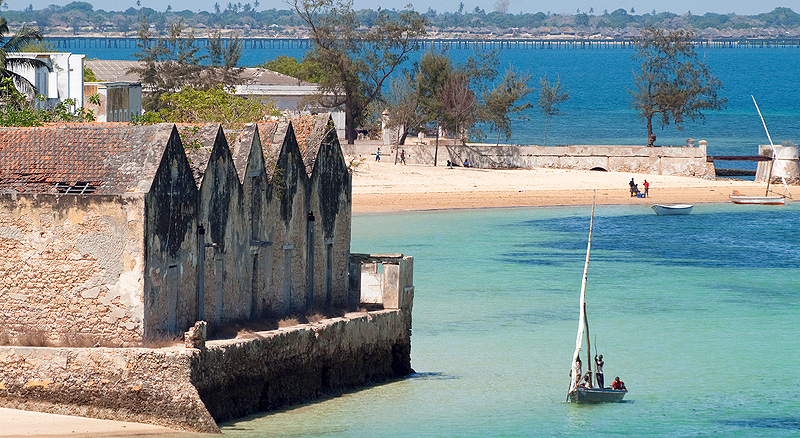 Island of Mozambique ©
Island of Mozambique © 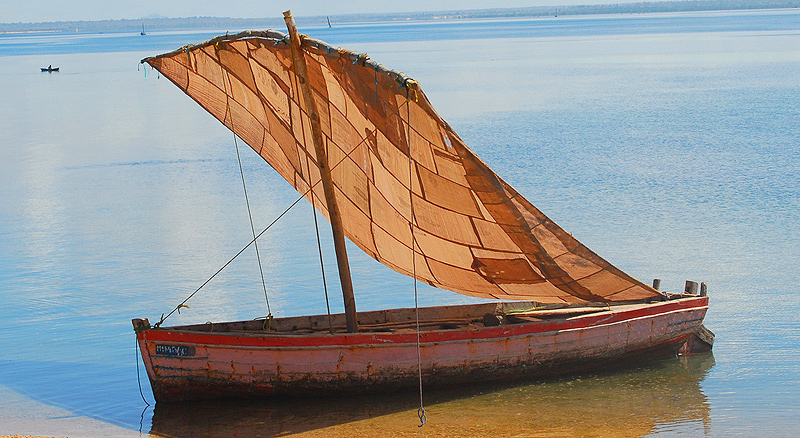 Mozambique ©
Mozambique © 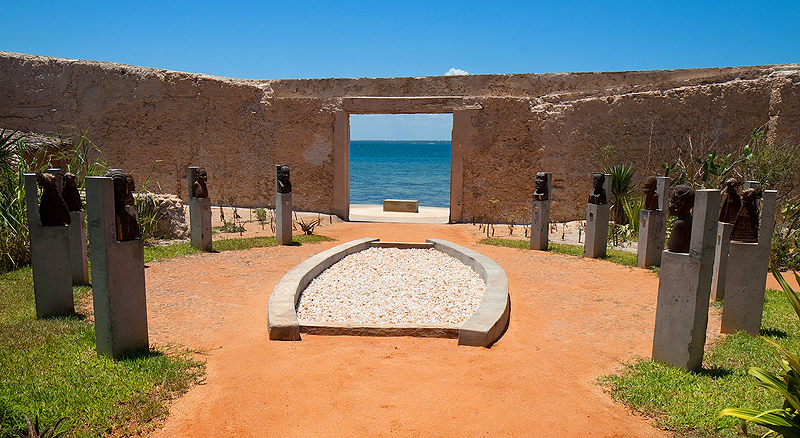 Mozambique ©
Mozambique © 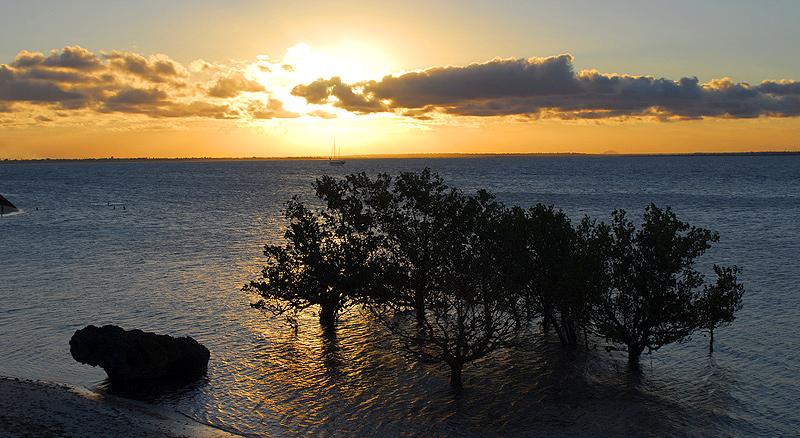 Mozambique ©
Mozambique © 